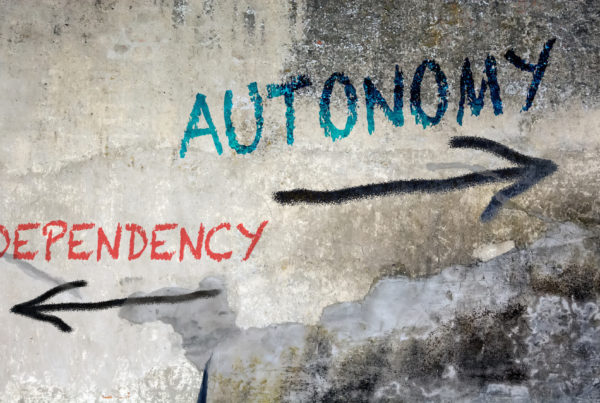Last Updated on June 6, 2023 by Dave Schoenbeck
Before starting my business coaching practice, I was a senior retail operations executive for large companies. I traveled weekly to visit our stores, meet, and talk to our store leaders. In every store, I spent 30 minutes or more enthusiastically explaining our company goals & objectives and how the store team could and should contribute to our company goals by executing the plans at their store. Frequently, I would say to myself, “Dave, you did a good job being clear and urgent” through my little speech. Then to test the management team’s understanding, I would ask….” Tell me what you thought was the most important ideas I shared.” I was shocked that they rarely mentioned my #1 challenge. This taught me that communication is the response I received, not what I had said so brilliantly. My store teams were motivated and talented people. So what went wrong? I suspect they were on a different channel, and I did not consider their state of mind, priorities, and filter system. This experience also taught me that it was critical to reinforce key issues repetitively and in their language. I still believe I could only be marginally successful in communicating until I was sick of repeating my message.
Lessons are repeated until they’re understood. For example, you can tell a first-time business owner not to rework the marketing campaign every 30 days, but until they do it and find a reduced customer engagement, they may not learn. Essentially, sometimes you have to learn lessons the hard way. Clarity in communication, reflective listening, and the ability to look internally to do better externally is crucial.
Read on to learn the importance of effective business communication in daily interactions.
Clearness in Communication
Start with business assessment tools to see where you have gaps and skills. This may provide insight into how you think and work through problems.
Good communication bridges confusion and clarity, so become clear about your capabilities.
Clarity of communication starts with active listening and ends with thoughtful responses. So, beyond the choice of words and explanations, listen to the tone and context, and determine why it’s shared.
Active Listening Skills
Leadership is about more than speaking; it’s also about active listening. Here are a few steps to follow and why they are essential.
- Undivided attention – Don’t let your phone, thoughts, or other distractions come between you and the person you’re listening to.
- Body language – Eye contact, body direction, and gestures contribute to effective speaking and listening.
- Withhold judgment – Maintain an open mind and listen without bias — you might glean incredible information.
- Seek clarity – Ask questions if something sounds awry or you cannot remember the finer points.
- Restate what you hear – Repeating what you hear lets the speaker know what is stuck and what is missing.
- Reshare – Share your insights as the conversation unfolds, but only after you fully understand what is shared.
Active listening is an essential leadership skill that requires being open-minded while listening and absorbing.
Reflective listening is even more powerful in building trust. Doing this requires two steps. First, seek to understand a speaker’s idea, then repeat the idea back to the speaker to show you’ve understood. From there, you can build onto the conversation with mutual respect. They feel heard and understood, and you are engaged in the discussion. Active listening skills are more accessible to practice than reflective listening, but reflective builds on active.
Words and Actions in Leadership
Words and actions must align — and even the physical activities while communicating. It is said more than 70% of communication is non-verbal. Yet, true leaders can command a room with their presence and capture the audience’s minds with their oratory skills.
If you are building mutual understanding, you’re more likely to have effective communication and progress. Conversely, misunderstandings often lead to delays, disgruntled teams, and a hostile workplace.
When you have clarity of communication, you are one step closer to resolving any problems that come through the doors. Everyone is on the same page and can move together as one unit rather than multiple factions.
Are you frustrated that your team doesn’t communicate effectively? Click here, and let’s meet on a video call to work on the effectiveness of your communication.
Coach Dave
- Why Listening is Important for Effective Decision-Making - April 11, 2024
- Here’s What We Have Learned About Running Effective Meetings - April 4, 2024
- Does Your Meeting Management Demonstrate Emotional Intelligence in Leadership? - March 28, 2024



